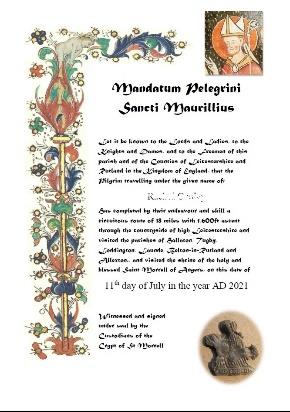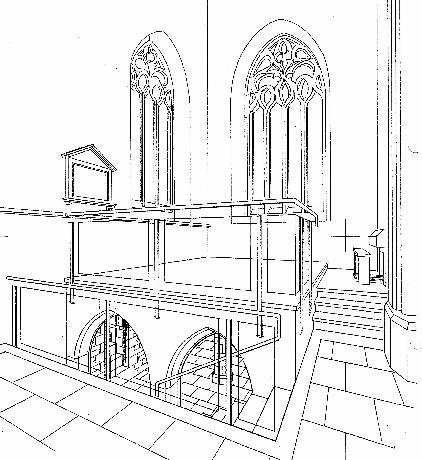St Morrell’s Round – A circular pilgrimage of about 18 miles through High Leicestershire

On moving to Hallaton in 2016 I was fascinated to hear from local historian, John Morison. We learned how a chapel dedicated to St Morrell had been rediscovered at the top of Hare Pie bank two years earlier.
The chapel was built by the Norman overlords circa AD1250 and was dedicated to the Bishop of Angers who died in AD453. The chapel had been the destination of pilgrims for nearly three hundred years until Henry VIII outlawed pilgrimage in Britain.
One of the reasons that we moved to Hallaton was the beautiful surrounding countryside. While we were exploring, I began to imagine the idea of creating a pilgrimage drawing on our experience of walking the Camino di Santiago across northern Spain.
During the first Lockdown we continued exploring and working out how to make a great walking route. It had to follow established rights of way, be achievable in one day (or more) be sustainable (accessible by public transport) and tie together points of interest on the Norman history and pilgrimage theme.
At exactly the same time a project to reinter the skeletons, found during the excavation of the chapel in the medieval crypt under St Michael’s Church in Hallaton, was announced by Denis Kenyon and John Morison. This provided the trigger to launch the pilgrimage in conjunction with the crypt project.

We know that bringing people to the area benefits the community and local businesses. Pilgrims who complete the route can apply for a Pilgrim’s Certificate of Achievement. And also have the opportunity to make a donation to the Crypt restoration project.
The pilgrimage starts and finishes at the museum on Churchgate in Hallaton next to St Michael’s church. It then passes Hallaton Castle on its way to Tugby, where the Norman window in the tower would have been visible to any passing pilgrims.
The walk then goes to the isolated church at Loddington and as it crosses the ridges of High Leicestershire it passes fragments of the ancient Leighfield Forest that once covered the whole area.
The Launde Big Wood that is on the route is conserved and shows exactly the kind of woodland that pilgrims walked through on their way to Hallaton.
The far point of the route is Launde Abbey originally built in 1099 as an Augustine Priory and later taken by Thomas Cromwell while he was working for Henry VIII as the tradition of pilgrimage was brought to an end in 1538.
From Launde the walk follows the beautiful Chater valley as far as Leigh Lodge before turning to return to Hallaton via Belton and Allexton.




 Fleckney and Kibworth Running Club
Fleckney and Kibworth Running Club

